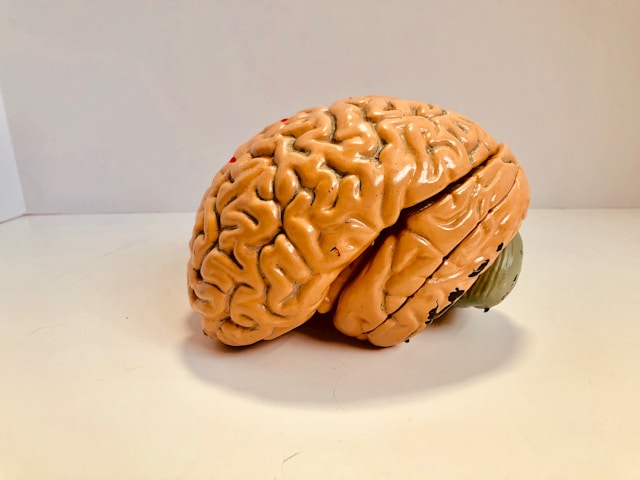
The human brain is a complex and fascinating organ that controls our thoughts, emotions, and behaviors.
One of the most distinctive features of the brain is the ridges on the cerebral cortex, which are responsible for many of its functions.
In this article, we will explore what the ridges on the cerebral cortex are, their function, and the different roles of gyri and sulci.
What are the Ridges on the Cerebral Cortex?
The ridges on the cerebral cortex are known as gyri, and the grooves between them are called sulci.
The cerebral cortex is the outermost layer of the brain and is responsible for many of its functions, including consciousness, perception, and voluntary movement.
The ridges and grooves on the cerebral cortex increase its surface area, allowing for more neurons and synapses to be packed into a smaller space.

Types of Ridges on the Cerebral Cortex
The cerebral cortex is composed of gyri (ridges) and sulci (grooves). Although there isn’t an extensive classification system for every single ridge, some notable gyri are recognized due to their functional importance.
Here are a few examples:
Frontal lobe
- Precentral Gyrus: Primary motor area controlling voluntary muscle movements.
- Orbitofrontal Gyrus: Influences decision-making and behavior.
- Anterior Cingulate Gyrus: Involved in conflict monitoring and error detection.
Parietal lobe
- Postcentral Gyrus: Primary somatosensory area integrating tactile, proprioceptive, and thermal information.
- Superior Parietal Lobe: Processes spatial awareness and visuospatial skills.
- Angular Gyrus: Integrates visual, auditory, and linguistic information.
Temporal Lobe
- Superior Temporal Gyrus: Contains Wernicke’s area, critical for comprehension of spoken and written language.
- Fusiform Gyrus: Recognizes faces and objects.
- Hippocampal Formation: Essential for forming memories and spatial navigation.
Occipital Lobe
- Primary Visual Cortex: Located in the Calcarine Fissure, processes visual information.
- Lingual Gyrus: Surrounds the primary visual cortex and contributes to object recognition.
Function of the Ridges (Gyri and Sulci)
The cerebral cortex is the outermost layer of the brain and is responsible for many of our cognitive functions.
The gyri and sulci on the cerebral cortex serve two essential functions:
Increasing surface area
The gyri and sulci work together to increase the surface area of the cerebral cortex.
If the cortex were smooth, its potential for expansion would be limited.
However, the presence of sulci introduces folds and creases, effectively creating more surface area within the limited space of the skull.
This expanded surface area is instrumental in accommodating the intricate neural networks and connections responsible for cognitive processing.
Forming brain divisions
Beyond merely increasing surface area, the gyri and sulci play a crucial role in forming distinct landmarks that aid in organizing the brain.
These features create divisions and boundaries that help us identify and understand the brain’s structure.
By separating the cerebral cortex into lobes and hemispheres, the gyri and sulci establish a framework for studying and comprehending the brain’s functions.

What Are The Impact of Gyri on Specific Functions
The intricate folds and grooves of the cerebral cortex, known as gyri and sulci, are not merely aesthetic features.
They play a crucial role in shaping and enhancing specific brain functions.
Let’s explore how the topography of the brain influences various cognitive abilities:
Motor control
- Motor Gyrus: Located near the top of the frontal lobe, this gyrus controls voluntary movements like walking, talking, and writing.
- Precentral Gyrus: This gyrus sits just in front of the motor gyrus and is responsible for planning and initiating movements.
Sensory processing
- Primary sensory areas: Different gyri in the temporal, occipital, and parietal lobes process specific sensory information like vision, hearing, and touch.
- Somatosensory cortex: This gyrus, located in the parietal lobe, maps the body’s sensory surface.
Language
- Broca’s Area: Situated in the frontal lobe, this gyrus plays a critical role in speech production.
- Wernicke’s Area: Located in the temporal lobe, this gyrus is responsible for language comprehension.
Higher-order functions
- Prefrontal cortex: This region encompasses several gyri involved in complex functions like executive control, decision-making, and social cognition.
- Temporal lobe: This lobe houses gyri associated with memory, emotion, and language comprehension.

Conclusion
The ridges on the cerebral cortex are a crucial component of brain function, allowing for more neurons and synapses to be packed into a smaller space.
The gyri and sulci on the cerebral cortex have different functions, with gyri responsible for processing information related to movement, sensation, and perception, while sulci are responsible for separating different regions of the brain and allowing for more efficient communication between them.
Understanding the significance of the ridges on the cerebral cortex is essential for understanding brain function and the role it plays in our daily lives.
FAQs
Yes, the ridges on the cerebral cortex can change over time due to factors such as aging, injury, and disease.
Damage to the ridges on the cerebral cortex can result in a range of neurological disorders, including Alzheimer’s disease, Parkinson’s disease, and epilepsy.
No, the ridges on the cerebral cortex can vary between individuals, with some people having more pronounced gyri and sulci than others.
Yes, the ridges on the cerebral cortex can be seen on brain scans such as magnetic resonance imaging (MRI) and computed tomography (CT) scans.

